Our 10 Favorite Autos Posts Of The Year#

Geely’s Biggest Challenge: Selling Made-In-China Volvos In America, Or In China? (January 8)
The extended negotiations between Ford and Geely regarding the future of Volvo have, at least on the surface, come close to wrapping up.As the Wall Street Journal explained late last week, Ford recently settled “substantial commercial terms” of the sale, leaving financing of the deal (which, as another writer pointed out last month, shouldn’t be a problem) and government approvals as the last major hurdles. According to Ford, a definitive agreement should be signed at some point in the first quarter of this year, with the sale completely closed by summertime.
So, once the dust settles, Ford hands over the reins to Geely, and the first “Made-in-China” Volvos roll off the assembly line, what obstacles should Geely expect to encounter from consumers both at home and abroad?
.
Huatai's B11 sedan
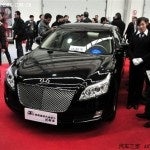
Huatai B11: China’s First “True” Premium Luxury Car? (February 1)
Year by year, however, Chinese manufacturers are gradually rising to the challenge and producing consistently better models. Though the road ahead is nothing if not paved with uncertainty, the Chinese automaker Huatai appears to be targeting a heretofore underserved niche — the “semi-premium market” — with their newest sedan, the B11. According to China Car Times, which has some spy shots captured at a press event for the B11 held this weekend in China.
As CCT (insightfully) points out, though early spy shots of the B11 elicited no shortage of snark by those who saw Huatai’s first premium offering as a “Bentley clone,” the production model is sleek and spacious (a nod to the Chinese car buyers’ mantra “longer is better”), and very well could prove a worthy challenger to the foreign-brand-dominated premium market. (Though the ultra-premium market will likely remain the singular domain of the Bentleys, Maybachs and Ferraris of the world for the foreseeable future.) Interestingly enough, the fact that Huatai plans to introduce diesel models of the B11 has CCT speculating that the company may have one eye on the Europe market.
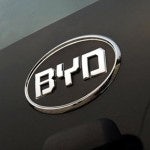
Chinese Automaker Takes Center Stage At Geneva Auto Show (March 3)
The AFP reported on the up-and-coming, Warren Buffett-endorsed Chinese automaker BYD (discussed previously on Jing Daily) making its debut at this year’s Geneva Auto Show. BYD has been in the news quite a bit lately, with its CEO Wang Chuanfu becoming the richest person in China last year and the company announcing plans to link up with Daimler to set up a new electric vehicle brand and R&D center in China. Though BYD’s plans to crack the lucrative US market have not yet materialized, it appears the brand may have its hands full in its home market. Nonetheless, its appearance at the Geneva Auto Show, alongside other emerging-market players like Tata of India and Malaysia’s Bufori, is BYD’s way of showing it intends to do everything possible to develop a larger global footprint.
Chinese automakers like BYD — despite their size and mountains of cash — still have a long road ahead if they’re going to be able to convince auto buyers outside of China of their quality and reliability. This may be even more difficult in the short term because of Toyota’s recent difficulties. If an established, trusted Asian company like Toyota can have quality control issues, in the minds of consumers, it will be hard to trust a new, relatively untested company like BYD. However, making appearances at major auto shows is a good way to give consumers outside of China a chance to see and become acquainted with the new kid on the block.
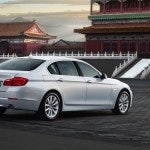
Mercedes-Benz And BMW Announce New Elongated Models For China Market (April 7)
Chinese car buyers have found that one of the perks of their country surpassing the United States to become the world’s largest auto market is that automakers finally pay attention to the design cues they want the most. As Jing Daily wrote in January, automakers like Buick, Volvo, and Audi have already released special models for the Chinese market that offer longer wheelbases, catering to the preference of many Chinese businesspeople to hire a chauffeur and stretch out in the back seat rather than drive themselves. As we wrote at that time,
This month, the German luxury giants BMW and Mercedes-Benz announced that they too will begin offering longer models of their respective 5-Series and E-Class sedans. According to BenzInsider, the elongated, China-only Mercedes E-Class is designed to directly compete with Audi’s popular A4 and A6, although it would seem that Mercedes is really looking to appeal to China’s infamous A8-driven crowd with this sedan.
[For automakers in China], localized design can be the key to expanding market appeal. While most of the world’s top automakers are developing smaller, more efficient models for developed markets, in China the old adage “bigger is better” has become a mantra for wealthier car buyers.
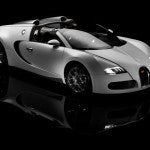
Records Set As Car Sales At Beijing Auto Show Top $22 Million (May 4)
Auto China 2010 — the Beijing Auto Show — wrapped up on this weekend and heads were still spinning at a couple of figures produced by the exhibition. First, the week-long show set a world attendance record (with over 800,000 visitors stopping by over the course of the week), and second, approximately 40 vehicles were sold at the event for a grand total of more than 150 million yuan (US$22 million). Some of the more rare vehicles — like the Bugatti Veyron 16.4 Grand Sport, which had a price tag of 38 million yuan (US$5.6 million) — were even purchased on the first day of the event.
From China Daily:
According to Gao Mengxiong, Maserati China’s sales manager, five of the six cars he was displaying sold at the show and will be delivered to customers.
“Another 10 will be delivered in six to eight weeks, after the cars are customized to the customers’ requirements,” Gao said.
The luxury brands were on show in the E4 and E5 exhibition halls and most were priced at more than 2 million yuan.
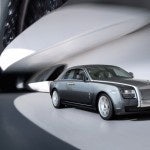
“Unbelievably Young Customers” In China Push Rolls-Royce Image Overhaul (June 3)
Buyer trends in China — the world’s largest auto market — are effecting change in established brands like Rolls-Royce, not only in terms of their China strategy but also their broader global strategy. While we — and many others — have often gone back to the example of longer-wheelbase models by BMW, Mercedes-Benz and others, popular among China’s chauffeur-happy upper-crust, consumer demographics in China are now pushing some of the world’s top auto brands (some of which cater to predominantly older buyers) to consider revamping their image to appeal more to the country’s young entrepreneurs. Now it seems that even Rolls-Royce —despite already strong sales in China — is not immune to this.
From the FT:
Rolls-Royce say that they are aiming for a fresher, more youthful brand image worldwide – largely because of the Chinese market.
In an interview today, Torsten Müller-Ötvös, Rolls-Royce’s new chief executive, told the FT that China was due to replace the UK as Rolls’ second-biggest market after the US this year.
While the brand’s customer base includes more than its fair share of Middle Eastern emirs and industrialists’ widows in Mayfair, in China a first-time buyer of a Rolls is likelier to be a self-made man — and a young one at that.
Its youngest customer anywhere in the world is a Chinese entrepreneur aged 28.
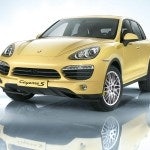
China Becomes #1 Market For Porsche Cayenne (July 26)
Along with its German counterparts Mercedes-Benz and BMW, Porsche has benefitted greatly from China’s growing love affair with the automobile, going from sales of around 50 vehicles per year after entering the mainland market in 2001 to over 8,500 in 2009. In the last year and a half, Porsche hasdebuted its Panamera Turbo at the Shanghai Auto Show, made inroads in second- and third-tier cities, launched a China-only version of its popular Cayenne SUV at the Shanghai World Expo, and announced that the company plans to build its 10th plant in China to double production capacity within four years.
Recently, the company announced that its huge push in the SUV-mad China market has paid off, with China becoming the Cayenne’s largest market and Porsche’s third-largest market after the United States and Germany.
As Gasgoo reports today, in 2009 Porsche sold 8,629 units in China, of which the Cayenne accounted for 83% of sales, or 7,556 vehicles. Porsche has said that the company expects China to become its second-largest single market soon, surpassing Germany, with projections that sales in China will exceed 16,000 units per year by 2012. Perhaps helping the automaker reach that goal even sooner, two new Cayenne models — launched last month at the Shanghai World Expo — are set to go on sale in China: the Cayenne S and the Cayenne Turbo, both of which will be equipped with V8 engines and be priced at 1.48 million yuan ($217,000) for the S and 2.03 million yuan ($300,000) for the Turbo.
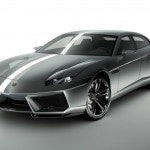
Lamborghini To Produce Estoque In China In 2012? (August 20)
Lamborghini announced it would introduce eight models to the China market in the remainder of the year in an effort to better compete with rivals Ferrari and Porsche, and today there are rumors swirling that the Italian supercar maker may plan to go a step further in 2012 and actually produce its four-door Estoque in China. As Gasgoo reports, if — or when — it goes on sale in China, the Estoque (which was originally unveiled in 2008 at the Paris Auto Show) will sell for 4 million yuan ($589,000).
While the fact that Lamborghini has so much faith in the demand for a four-door, more than half-million-dollar car in China is notable, what we really find interesting about Lamborghini’s China strategy is its plan to produce the Estoque locally. This brings up an issue that’s been faced (and is currently being faced) by automakers like Porsche and Volvo — will well-heeled Chinese want to drive a made-in-China supercar? We’ve looked at this question before, so we’ll leave it to the links, but the only reason we can currently imagine why Lamborghini would want to produce the Estoque in China is because it expects consumer perceptions to change by 2012. That, or Lamborghini’s willingly walking into a tougher situation than it expects.
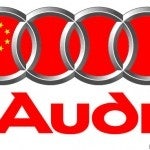
China Still On Track To Eclipse Germany As Audi’s Top Market (Sept 3)
While many are concerned that the growing number of new cars hitting the road in already crowded cities like Beijing are unsustainable, car sales in the world’s largest auto market continue to chug ahead, buoying foreign brands that have been hit hard in the past two years in their home markets.
Although observers note that new car sales in China started to gradually taper off this year as government incentives were scaled back and prices for consumer goods rose, for some automakers — particularly those from Germany — 2010 has been a good year.
Few German automakers have benefitted as much this year as Audi, one of the first premium European brands to really dig in its heels in the China market. As Jing Daily pointed out in March, analysts projected that 2010 would mark the first year that Audi would sell more vehicles in China than in its home country, with estimates that 200,000 Audis would find new homes there over the course of the year. Considering Audi sold 150,000 vehicles in China in 2009 — the year of the government subsidy — this target is harder to hit than some might think.

Chinese Automaker Chang’an To Open Detroit R&D Center (November 17)
The difficult, but slowly improving, situation for Detroit’s auto industry looks to get a little better, with the announcement that the Chinese automaker Chang’an— which has joint ventures with Ford, Mazda, Peugeot and Suzuki — plans to open a research and development (R&D) center near Detroit early next year. The deal was announced this week by Wayne County Executive Robert Ficano, who courted Chang’an on a trade mission in 2009.
According to the Detroit Free Press, Ficano said that the investment by Chang’an will bring 100 engineering jobs and put the company closer to Ford, one of its JV partners in China. Ficano is currently on his sixth trade mission to China with a 26-person delegation, which he says is focused on bringing jobs back to Detroit and Michigan.